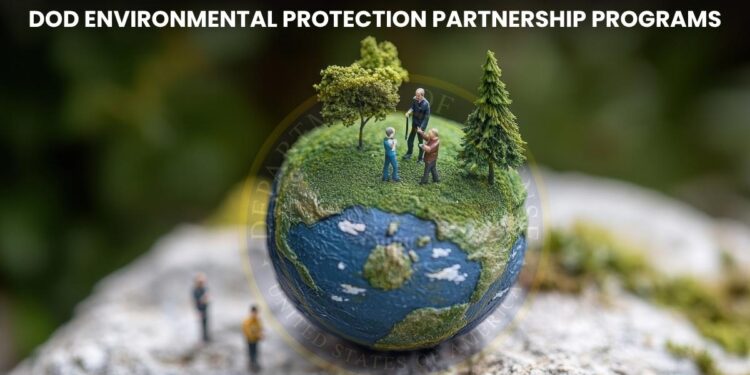Nowadays, military bases not only serve as security but also host training, exercises, and operations from time to time. These activities often have a significant impact on natural resources and the environment. To address this issue, the US DoD has developed programs to minimize the impact of military base camp activities on the environment.
The United States Department of Defense has introduced several programs aimed at addressing problems that hinder military training and operations while also protecting natural resources. These programs require partnerships with government agencies, NGOs, and local communities.
The programs introduced by the Department of Defense not only help protect the environment but also provide the forces with long-term mission readiness. We have discussed these programs in this article. By reading this article completely, you will have complete information about these programs. So, stay tuned!
What are DoD Environmental Protection Partnership Programs?
The sole purpose of DoD Environmental Protection Partnership Programs is to maintain a balance between the military and the environment, that is, to ensure that natural resources are harmed little or not at all during military operations or training.
These programs introduced by the US DOD have four main functions, which are to secure military bases and training areas, protect natural resources and wildlife, enforce laws, and find long-term and sustainable solutions. It includes many major programs, which are as follows:
- Readiness and Environmental Protection Integration (REPI) Program
- Strategic Environmental Research and Development Program (SERDP)
- Environmental Security Technology Certification Program (ESTCP)
- Partners in Flight (PIF) and Bird Conservation
- Land and Species Conservation Partnerships
- Pollution Prevention (P2) and Sustainability Initiatives
We have discussed all these US DoD Environmental Protection Partnership programs in detail below.
Readiness and Environmental Protection Integration (REPI) Program
The aim of this program is to prevent changes or development in areas surrounding training or military bases that could cause problems for the military.
It works with the community, state agencies, and land trusts to reduce or preserve land for conservation, i.e., purchase land to prevent urbanization.
Strategic Environmental Research and Development Program (SERDP)
The purpose of this program is to solve environmental problems through technology and research. It works to find new methods of water purification, energy-saving devices, or technology to improve air quality.
It is run with funding from the Department of Defense, Environmental Protection Agency, and Department of Energy.
Environmental Security Technology Certification Program (ESTCP)
The aim of this program is to test new technologies that could contribute to environmental protection, first at a military base, to accurately test their capabilities and effectiveness.
It allows new technology to be quickly implemented at military bases, makes it easier to comply with environmental regulations, and also stimulates research and development.
Partners in Flight (PIF) and Bird Conservation
The aim of this program is to protect the birds and their habitat, which can be affected during training or operations. It assesses the number of birds and their living conditions and creates a safe environment for the birds to ensure the necessary area is maintained.
This program ensures that birds and other animals are protected, bird accidents and training disruptions are prevented, and the local ecosystem remains balanced.
Land and Species Conservation Partnerships
Many US military bases are located in areas where rare or endangered species live; the program aims to protect their habitat.
It involves working with the U.S. Fish and Wildlife Service and state agencies to establish protected areas and implement conservation plans for species and to ensure compliance with the Endangered Species Act.
Pollution Prevention (P2) and Sustainability Initiatives
The sole objective of this program is to reduce pollution generated from operations or training in the country and to save as much energy as possible.
Its work includes implementing recycling and energy-saving programs at the installation level, using eco-friendly technology and equipment, and reducing waste management and carbon footprint.











